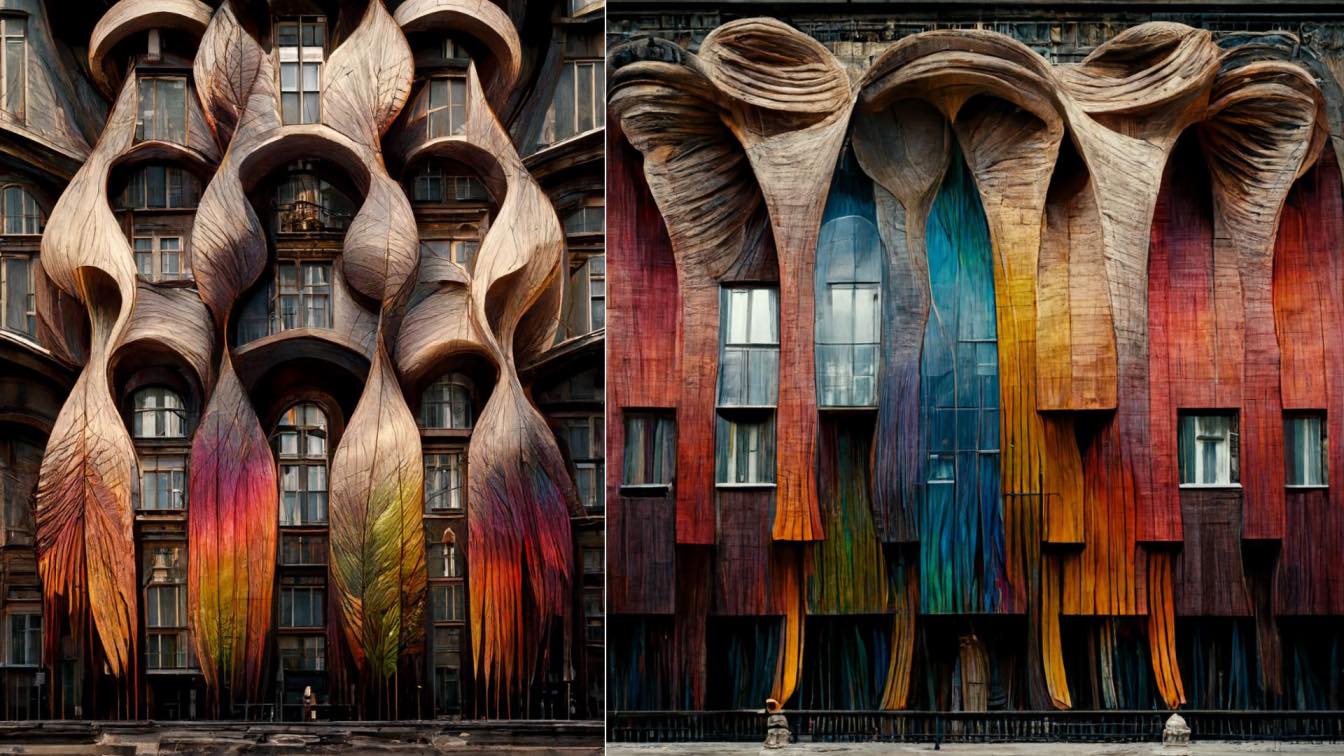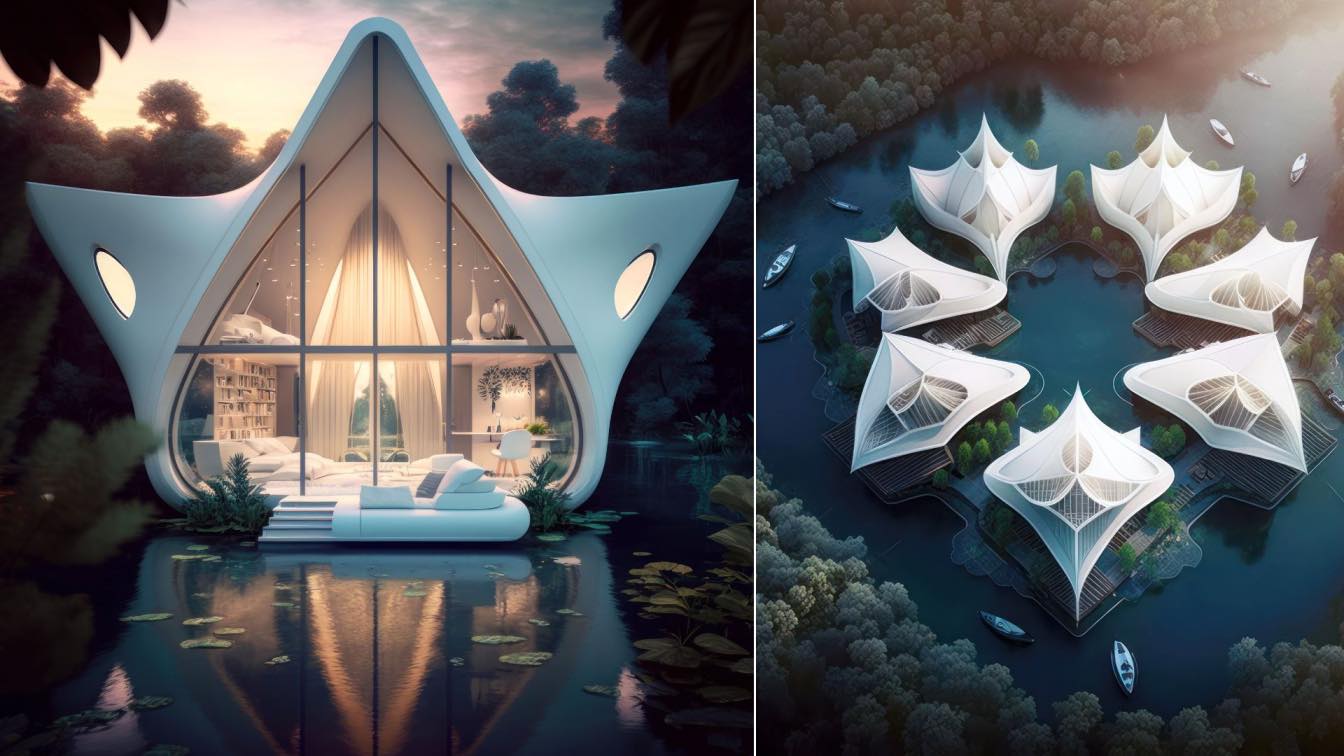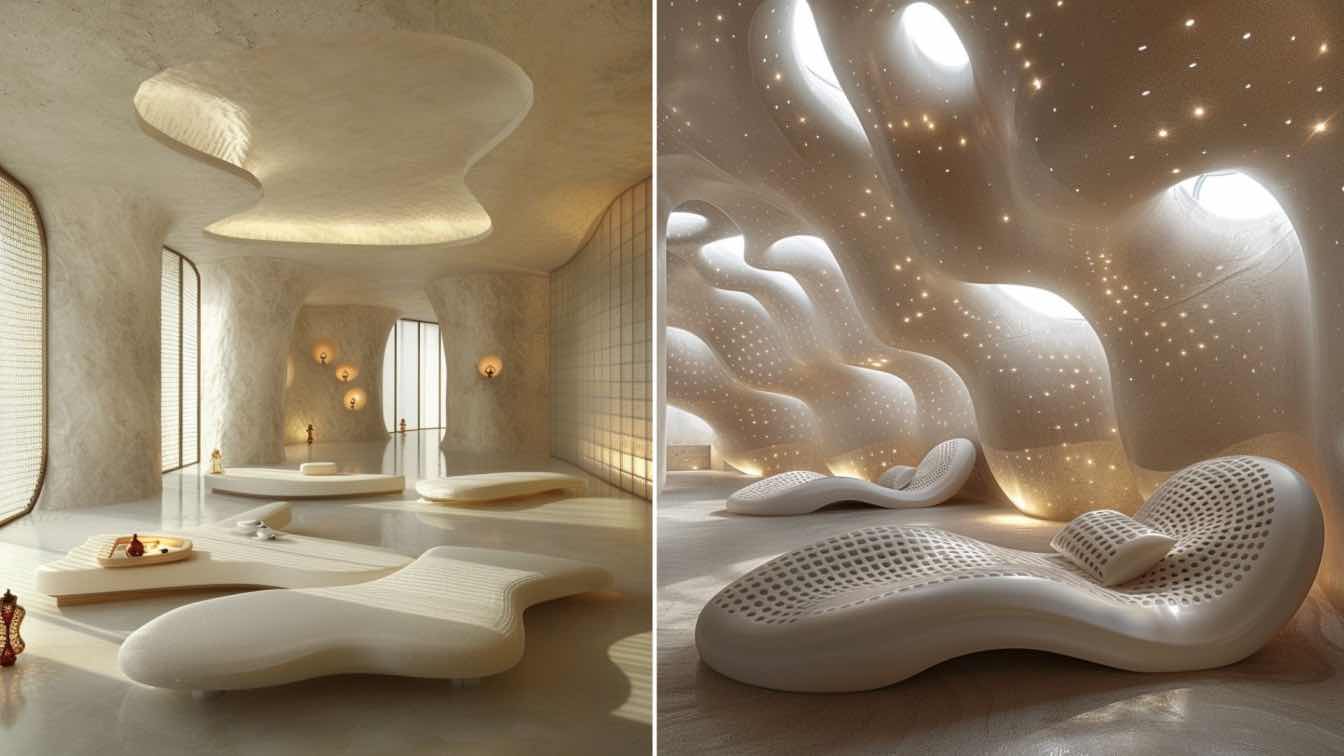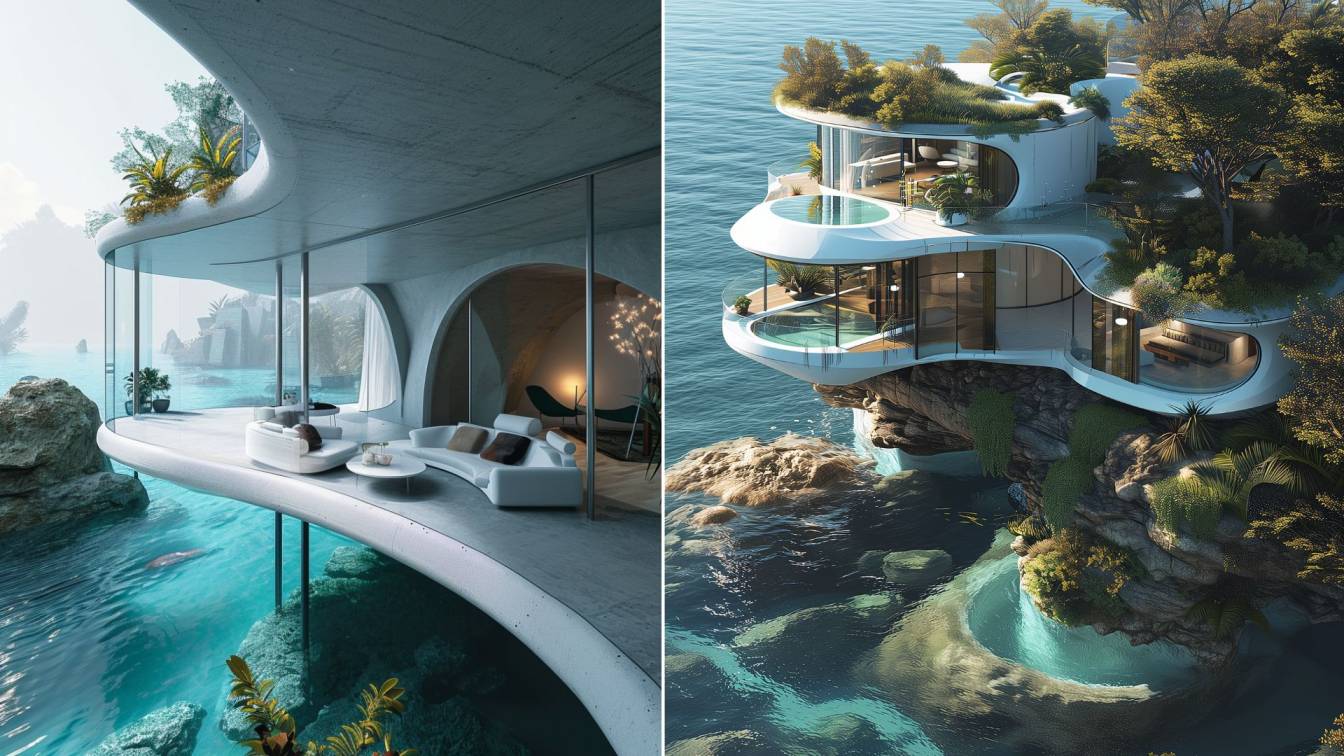Hassan Ragab: The current global creative scene is in an ongoing debate about artistic authenticity and ownership. However, I find a great freedom in using Ai text to image generators. The new tools are providing a medium of freedom. Freedom from physicality, from functionality and from modules. With the current limitations of said tools (being only able to generate 2d images) and as we still have some time for those tools to make their leap into the 3d world, I find great enjoyment in solely focusing on exploring visions of fantasy architecture. On the one hand it’s a good training to understand and learn prompt crafting, and on the other hand it’s a great way to expand our imagination and challenge art and architecture as we formerly knew. It includes us in the unprecedented creative context where we can quickly and continuously develop our concepts/ideas while also mixing and connecting our thoughts in ways we could have never imagined.
While I had no intention of approaching the art nouveau style in creating “Feathers Architecture”. I believe the organic elements which were used in the prompts led to a similar style. Rather than giving wings to the buildings I was more interested in the integration of feathers with the architectural façade as means of a novel way of ornamentation. To achieve said results I was keen on using Midjourney. Unlike other Ai text to image prompts like DallE2 and Stable Diffusion, Midjounrey works really well with more artistic concepts as most of its models favor beauty over photorealism, which makes it a very handy tool for mixing fantasy with architecture.


















